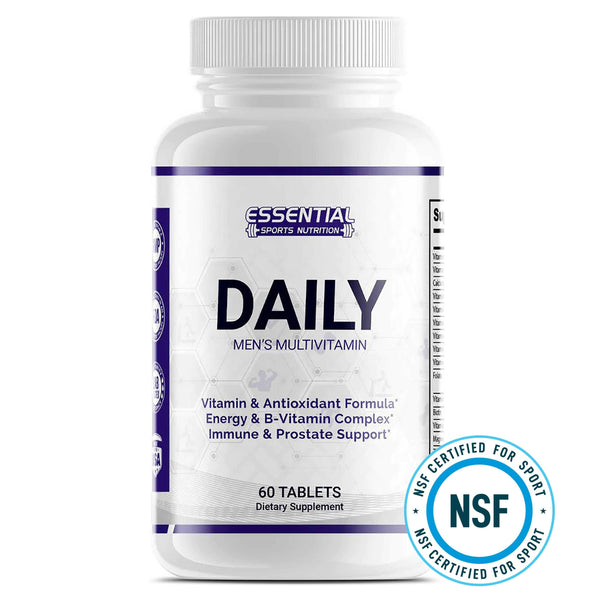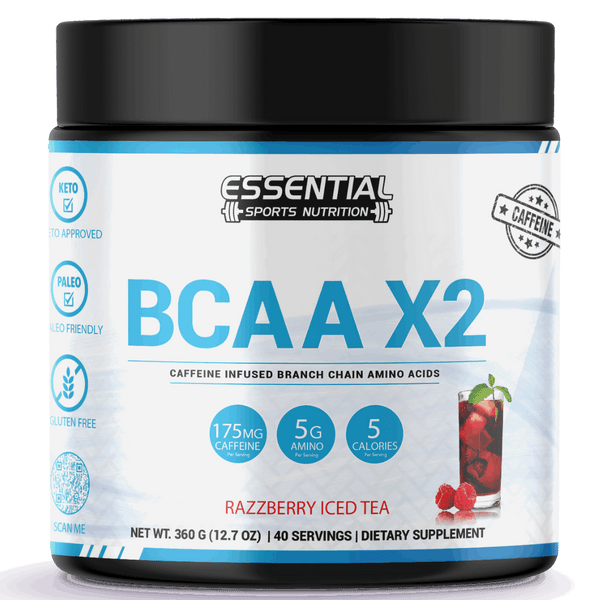Guide to Squats: Proper Form, Muscle Work, and Variations
Guide to Squats: Proper Form, Muscle Work, and Variations
Mastering proper form for squats is key for effectively targeting major lower body muscles like glutes, quads, and hamstrings, engaging your core for stability. Besides boosting leg strength, squats improve core stability, activate glutes powerfully, and reduce injury risks, benefiting both athletic performance and daily movements. Try bodyweight squats to begin and focus on technique, then move on to weighted squats for more intensity and strength. Common mistakes like leaning forward or knees collapsing inward should be avoided for proper alignment and muscle engagement. Exploring variations like front, sumo, and Zercher squats add challenges and muscle balance.

Key Takeaways
- Master proper form for injury prevention and muscle engagement.
- Engage major lower body muscles for strength and stability.
- Benefit from improved leg strength, core stability, and power.
- Explore variations like front, sumo, and Zercher squats for muscle diversity.
- Customize squats with weights for progressive overload and muscle growth.
Muscles Worked During Squats
Engage all major lower body muscles effectively by performing squats correctly. Squats are a powerhouse exercise that targets key muscle groups including the glutes, quads, hamstrings, and calves. By incorporating squats into your workout routine, you are strengthening these muscle groups and engaging your core for stability and strength. What makes squats truly efficient is their ability to activate multiple muscle groups simultaneously, providing a complete lower-body workout in just one movement.
When you perform squats, each repetition works towards improving your overall lower body strength and muscle development. Compared to machine exercises that isolate specific muscles, squats offer a more holistic approach to training. This compound movement not only helps you build strength but also enhances your balance and coordination. So, the next time you hit the gym, make sure to include squats in your workout to reap the benefits of this versatile exercise.
Importance of Proper Form
Moving on from the discussion on muscles worked during squats, mastering the proper form data-mce-fragment="1"> is essential to reaping the full benefits and avoiding injuries during this compound exercise. Proper form plays a vital role in injury prevention by ensuring that the right muscles are engaged and joints are aligned correctly. When you maintain good form, you activate the glutes, quads, hamstrings, and core muscles effectively, leading to a more efficient and safer squatting movement.
Focusing on proper form allows for ideal force and power transfer, ultimately improving your performance and results. You can enhance your squat mechanics and achieve better outcomes by paying attention to details such as hip and knee alignment, torso position, and knee tracking. Learning and practicing correct squat form is not just about aesthetics; it is essential for progressing safely and effectively in your strength training and fitness goals. So, next time you squat, remember that form is key to maximizing the full potential of this exercise.
Benefits of Squats
Squats offer numerous benefits for your body. They help improve leg strength, enhance core stability, and effectively activate your glutes. By incorporating squats into your routine, you can work towards a stronger, more stable lower body.
Leg Strength Improvement
Improving your leg strength through targeted exercises like squats can benefit your overall physical performance and daily activities. Squats effectively enhance leg strength by engaging major muscle groups such as the quads, hamstrings, and glutes. This increased leg strength not only aids in everyday movements like walking, climbing stairs, and standing for extended periods but also boosts athletic performance in activities like running, jumping, and lifting. By incorporating squats into your workout routine, you can help prevent muscle imbalances in the legs, reducing the risk of injuries during physical activities. Additionally, regular squatting can improve muscle endurance in the legs, enabling you to sustain physical exertion for longer durations.
Core Stability Enhancement
Enhancing core stability through squats is essential for optimizing your overall physical performance and preventing injuries. Squats engage key core muscles such as the transverse abdominis and erector spinae, providing stability and support during the movement. Here are five benefits of enhancing core stability through squats:
- Improved core stability from squats enhances overall balance and posture.
- Strengthening core muscles through squats can reduce the risk of lower back pain and injuries.
- Enhanced core strength from squats can improve athletic performance in various sports.
- Core stability gained from squats is essential for functional movements in daily activities.
Glutes Activation Increase
Activating your glutes through proper form in this exercise is essential for maximizing strength and performance. Squats are highly effective in engaging the glute muscles - including the maximus, medius, and minimus - leading to improved power and stability. Strong glutes enhance athletic performance, contribute to better posture, and reduce lower back pain. Increasing glute activation during squats can improve hip stability and lower body function and even prevent knee injuries by ensuring proper alignment and support. Developing stronger glutes through squats can also boost your speed, agility, and ability to perform explosive movements in various physical activities. So, focus on engaging your glutes properly during squats to reap these benefits and enhance your overall strength and performance.
Bodyweight Squats Vs Weighted Squats
When comparing bodyweight squats to weighted squats, you'll notice differences in resistance levels, muscle engagement, and progression options. Bodyweight squats provide a great starting point for beginners to build strength and form, while weighted squats offer the ability to increase resistance as you progress. Understanding these distinctions can help you tailor your squat routine to meet your fitness goals effectively.
Resistance Level Comparison
When comparing bodyweight squats to weighted squats, it is important to take into account the varying levels of resistance utilized in each exercise. Here are some key points to keep in mind:
- Bodyweight squats primarily utilize your own body weight for resistance.
- Weighted squats involve additional weight such as dumbbells, barbells, or kettlebells.
- Bodyweight squats are great for beginners or focusing on technique.
- Weighted squats are ideal for increasing strength and muscle mass.
- Weighted squats allow for progressive overload, leading to greater muscle adaptation and growth compared to bodyweight squats.
Understanding the differences in resistance levels between bodyweight and weighted squats can help you choose the right type of squat for your fitness goals and abilities.
Muscle Engagement Differences
Engaging in bodyweight squats versus weighted squats elicits distinct muscle activation patterns and benefits. Bodyweight squats primarily target muscles using the resistance of your own body weight, focusing on functional movement patterns and body control. On the other hand, weighted squats increase resistance, intensify muscle engagement, and emphasize strength and muscle development. The added load in weighted squats challenges muscles differently, promoting greater muscle growth and strength gains compared to bodyweight squats.
| Muscle Engagement Differences | Bodyweight Squats | Weighted Squats |
|---|---|---|
| Resistance | Body weight | External weight |
| Intensity | Moderate | High |
| Muscle Focus | Functional | Strength and |
| movement patterns | muscle development |
Progression and Scalability
To progress effectively in your squat routine, whether starting with bodyweight squats or advancing to weighted squats, it is essential to understand the principles of progression and scalability for best results. When considering the shift from body weight to weighted squats, remember these key points:
- Bodyweight squats are ideal for beginners to establish proper form and build foundational strength.
- Weighted squats increase resistance to challenge muscles further and promote muscle growth.
- Progress from bodyweight to weighted squats gradually to avoid injury and allow for strength development.
- Bodyweight squats focus on mastering movement patterns, while weighted squats add intensity for muscle adaptation.
- Both variations improve lower body strength, but weighted squats provide additional resistance for progressive overload.
Common Squat Mistakes to Avoid
To perform squats effectively and safely, it is important to avoid common mistakes that can hinder your progress and increase the likelihood of injury. One vital mistake to avoid is leaning too far forward, which can strain your lower back and reduce the engagement of your leg muscles. Additionally, be mindful of your knees collapsing inward during the squat, which can lead to improper alignment and an increased risk of knee injuries. Another essential point is to watch out for arching or rounding your back, which can cause spinal issues and compromise your form. Focus on keeping your weight on your heels instead of shifting onto your toes to ensure proper force distribution and stability throughout the movement. Remember, promptly correcting these form mistakes is important for injury prevention and maximizing the effectiveness of the squat exercise.
Front Squat Variation
When performing the front squat variation, ensure the barbell rests in front of your shoulders to target specific muscle groups effectively. This variation is beneficial for developing strength and stability in the front of the body while enhancing overall balanced muscle development. Here are some key points to consider when incorporating front squats into your routine:
- The barbell placement in front of the shoulders targets the quadriceps, core, and upper back muscles.
- Emphasizing an upright torso position challenges the core and improves posture during the squat movement.
- Greater ankle, thoracic spine, and wrist flexibility are required for front squats compared to back squats.
- Front squats help improve front squatting mechanics, increase strength in the anterior chain, and provide a different stimulus to traditional back squats.
- Including front squats in your workout regimen can improve strength, stability, and muscle balance in the front part of your body.
Sumo Squat Variation
Curious about how to maximize your inner thigh, adductor, and glute engagement during your squats? Sumo squats are a fantastic variation to target these specific muscle groups effectively. By adopting a wider stance with your toes pointed outward, sumo squats engage the inner thighs, adductors, and glutes more intensely than traditional squats. This variation not only challenges your lower body in a different way but also helps enhance hip mobility and overall squat performance.
To give you a quick overview of the sumo squat, take a look at the table below:
| Sumo Squat Variation | |
|---|---|
| Targeted Muscles | Inner thighs, adductors, glutes |
| Stance | Wide stance with toes pointed outward |
| Benefits | Increased muscle engagement, improved hip mobility, enhanced lower body strength |
| Difficulty Level | Moderate |
| Variations | Sumo goblet squat, sumo squat with pulse |
Incorporating sumo squats into your workout routine can add variety, target specific muscle groups, and improve your squat game.
Zercher Squat Variation
One effective way to engage your upper back, core, and legs more intensely than traditional squats is by incorporating Zercher squats into your workout routine. Zercher squats involve holding the barbell in the crooks of your elbows, which shifts the load and emphasizes the muscles of the upper back, core, and legs. Here are some key points about Zercher squats:
- They target the upper back, core, and legs more intensely than traditional squats.
- Zercher squats improve grip strength and challenge core stability.
- This variation can help improve posture and overall functional strength.
- They provide a unique stimulus to the body, promoting muscle growth and strength development.
- Incorporating Zercher squats into your routine can add variety and challenge to lower-body workouts, preventing plateaus and keeping your routine exciting.
Consider adding Zercher squats to your training regimen to experience the benefits of this challenging variation.
Incorporating Squats Into Your Routine

To effectively incorporate squats into your routine and achieve the best results, aim to perform them at least 2-3 times a week. Begin with bodyweight squats to master the movement pattern before progressing to weighted variations. Mixing up your squat routine with different variations, such as sumo squats, goblet squats, or Bulgarian split squats, can help target specific muscle groups and prevent plateaus.
Proper form and technique are vital in preventing injuries and maximizing the benefits of squats. Remember to keep your chest up, back straight, and knees in line with your toes throughout the movement. Tracking your progress by gradually increasing the weight or reps over time will effectively challenge your muscles and improve strength and muscle growth.
Conclusion

In conclusion, mastering proper squat form is essential for reaping the myriad benefits this compound exercise offers. By maintaining correct posture, such as keeping the chest lifted and knees aligned with toes, individuals can effectively engage their quadriceps, hamstrings, glutes, and core muscles, promoting overall strength and stability. Additionally, adhering to proper technique reduces the risk of injury, ensuring long-term sustainability in one's fitness regimen. Beyond the physical gains, squats enhance functional movement patterns, translating to improved performance in daily activities and sports. Embracing the squat as a fundamental exercise cultivates a resilient physique and fosters a deeper connection between mind and body, empowering individuals to push past perceived limits and achieve their fitness aspirations.
Proper Squat Form and Different Squat Variations FAQs
Q: What are the benefits of performing squats with proper form?
A: Squats with proper form help improve lower body strength, mobility, and flexibility. They also engage multiple muscle groups, including quads, hamstrings, and glutes, making it an effective compound exercise.
Q: How do I perform a basic squat with proper form?
A: To perform a basic squat with proper form, stand with your feet shoulder-width apart, toes slightly turned out. Lower your body by bending your knees and pushing your hips back as if you are sitting down in a chair, keeping your chest up and back straight.
Q: What muscles do squats work?
A: Squats primarily target the quadriceps, hamstrings, and glutes. They also engage the core muscles, lower back, and calves to stabilize the body during the movement.
Q: What are some common squat variations to try?
A: Some common squat variations include goblet squats, bulgarian split squats, jump squats, box squats, and overhead squats. These variations target different muscle groups and can add variety to your workout routine.
Q: How can I ensure I maintain proper form while performing squats?
A: To maintain proper form while squatting, ensure your feet are stable on the ground, keep your back straight, and push your hips back as you lower your body. Squatting to an appropriate depth is also important based on your flexibility and strength.
Q: What are the benefits of using free weights for squats?
A: Using free weights, such as a barbell or dumbbells, for squats adds resistance and challenges your muscles in a different way. It helps improve strength, stability, and coordination during squats.
Q: How important is it to add weight to squats for progression?
A: Adding weight to squats is important for progression and continued muscle growth. It helps increase the challenge on your muscles, leading to strength gains and improved muscle endurance over time.
Q: Why Is It Important to Squat Properly?
A: Correct squatting is essential for your safety and gains. It aligns joints, activates muscles, and prevents pain. Mastering this move enhances strength, power, and stability for daily tasks and sports. So, nail that form!
Q: What Are 4 Important Things to Remember for Squat Form and Technique?
A: When focusing on squat technique, remember key points. Keep feet apart, back straight, engage abs, and sit back into imaginary chair. Avoid knees over toes and leaning forward. Push through heels to rise.
Q: Why Are Squat Variations Important?
A: Incorporating different squat variations is key to progressing effectively and preventing plateaus. Engaging different muscles and movement patterns challenges your body, ensuring continuous growth. Varying your squats also reduces the risk of overuse injuries and imbalances.




























